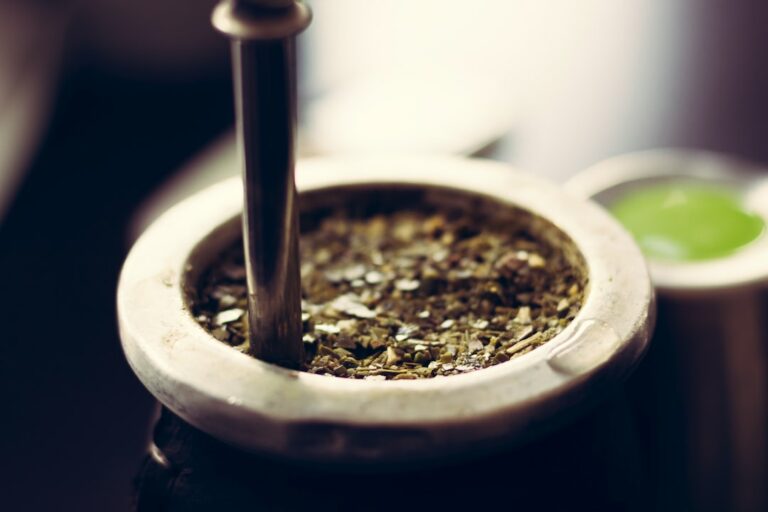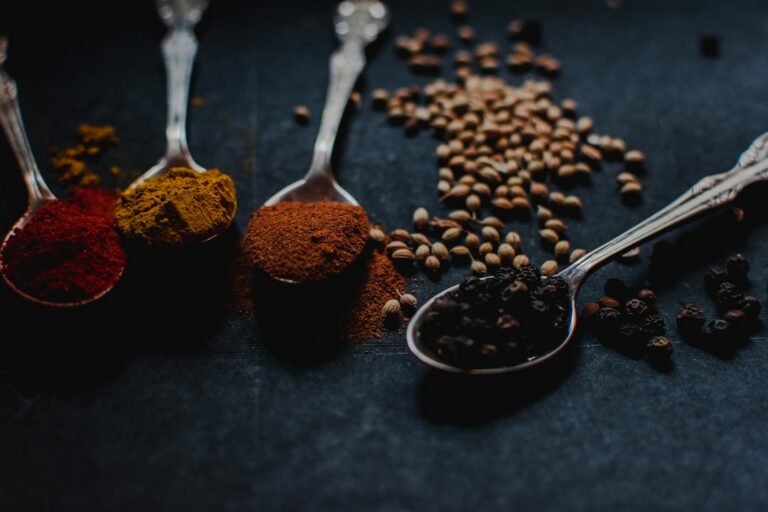Introduction
Definition of Functional Medicine
Functional medicine is a holistic approach to healthcare that focuses on identifying and addressing the root causes of illness. It takes into account the unique genetic, environmental, and lifestyle factors that contribute to an individual’s health. Unlike conventional medicine, which often treats symptoms with medication, functional medicine aims to restore balance and optimize the body’s natural healing abilities. One example of a natural remedy that is commonly used in functional medicine is chamomile tea, which has been shown to have calming effects and promote sleep. Another key aspect of functional medicine is its emphasis on supporting the immune system, which plays a crucial role in defending the body against infections and diseases. By addressing underlying imbalances and supporting the immune system, functional medicine seeks to promote long-term health and well-being.
Definition of Naturopathy
Naturopathy is a holistic approach to healthcare that emphasizes the body’s ability to heal itself. It is based on the principles of natural healing, using a combination of natural therapies, such as herbal medicine, nutrition, and lifestyle modifications, to promote wellness and prevent disease. Naturopathy aims to address the root cause of health issues rather than just treating symptoms. By focusing on the whole person, including physical, mental, and emotional well-being, naturopathy seeks to restore balance and support the body’s innate healing processes.
Comparison of Functional Medicine and Naturopathy
Functional medicine and naturopathy are two holistic health approaches that share some similarities but also have distinct differences. Both modalities focus on addressing the root causes of health issues rather than just treating symptoms. They emphasize the importance of a whole-person approach, taking into consideration physical, mental, and emotional well-being. However, functional medicine is a more science-based approach that integrates conventional medicine with alternative therapies, while naturopathy is a distinct system of medicine that relies primarily on natural remedies and therapies. Functional medicine practitioners often use advanced diagnostic testing and personalized treatment plans to address imbalances in the body, while naturopaths may use a combination of herbal medicine, nutrition, lifestyle changes, and other natural therapies. In summary, while both functional medicine and naturopathy share a focus on holistic health, their approaches and treatment modalities differ in significant ways.
Principles of Functional Medicine
Holistic Approach
Functional medicine and naturopathy are two distinct approaches to healthcare, although they share some similarities. One key difference is their holistic approach. Holistic medicine takes into consideration the whole person, including their physical, mental, and emotional well-being. It focuses on treating the root cause of illness rather than just the symptoms. This approach recognizes the interconnectedness of various body systems and aims to promote overall health and wellness. One example of a holistic approach to health is incorporating tea for kidney health. Tea has been shown to have beneficial effects on kidney function and can be a natural way to support kidney health. By incorporating tea into a holistic health regimen, individuals can take a proactive approach to maintaining kidney function and overall well-being.
Identifying Root Causes
Functional medicine and naturopathy are two distinct approaches to healthcare, although they share some similarities. While both focus on identifying and addressing the root causes of illness, functional medicine takes a more scientific and evidence-based approach, while naturopathy incorporates natural therapies and traditional healing practices. In functional medicine, practitioners use advanced diagnostic tests to understand the underlying imbalances in the body, such as hormonal or biochemical dysfunctions. They then develop personalized treatment plans that may include dietary changes, lifestyle modifications, and targeted supplementation. On the other hand, naturopathy emphasizes the healing power of nature and uses a range of natural therapies, including herbal medicine, nutrition, and physical manipulation. Both functional medicine and naturopathy recognize the importance of a holistic approach to health, considering not only physical symptoms but also mental, emotional, and spiritual well-being. While witches and plants are not directly related to functional medicine or naturopathy, they are examples of topics that may be explored in the context of herbal medicine and natural healing practices.
Individualized Treatment
Functional medicine and naturopathy both focus on individualized treatment plans tailored to each patient’s unique needs. These holistic approaches to healthcare take into account the whole person, including their physical, mental, and emotional well-being. By addressing the root causes of illness and considering the interconnectedness of the body’s systems, functional medicine and naturopathy aim to restore balance and promote optimal health. While there are similarities between the two, it is important to note that functional medicine incorporates a more scientific and evidence-based approach, utilizing advanced diagnostic testing and personalized treatment protocols. Naturopathy, on the other hand, emphasizes natural therapies and remedies, often drawing from traditional healing practices. Both functional medicine and naturopathy offer patients a personalized and comprehensive approach to healthcare, empowering them to take an active role in their own well-being.
Principles of Naturopathy

Healing Power of Nature
Functional medicine and naturopathy are two distinct approaches to healthcare, although they share some similarities. Functional medicine focuses on identifying the root causes of diseases and treating the whole person, taking into account genetic, environmental, and lifestyle factors. Naturopathy, on the other hand, emphasizes the healing power of nature and the body’s innate ability to heal itself. Both approaches recognize the importance of a holistic approach to health and the use of natural remedies. However, it is important to note that functional medicine incorporates scientific research and evidence-based practices, while naturopathy may include a wider range of alternative therapies. In terms of the most effective antibiotic, functional medicine aims to address the underlying causes of infection and strengthen the immune system, while naturopathy may recommend natural remedies such as herbal supplements or lifestyle changes to support the body’s natural healing processes.
Identifying and Treating the Cause
Functional medicine and naturopathy are two distinct approaches to healthcare, although they share some similarities. One key difference between the two is their approach to identifying and treating the cause of health issues. In functional medicine, the focus is on finding the root cause of a condition by looking at the interconnectedness of various body systems and addressing underlying imbalances. Naturopathy, on the other hand, emphasizes the use of natural therapies and remedies to support the body’s innate healing abilities. Both approaches can be effective in promoting overall health and well-being, but they employ different strategies. When it comes to diazepam substitutes, it is important to consult with a healthcare professional to determine the most appropriate alternative medications or treatments that can provide similar benefits and minimize potential risks.
Prevention and Education
Prevention and Education are key aspects of both functional medicine and naturopathy. These holistic approaches aim to empower individuals to take control of their health and well-being. One important aspect of prevention is breaking free from addiction. Functional medicine and naturopathy offer comprehensive strategies and support to help individuals overcome addiction and achieve optimal health. By addressing the root causes of addiction and providing education on healthy lifestyle choices, these practices empower individuals to make positive changes and live addiction-free lives.
Differences Between Functional Medicine and Naturopathy

Training and Education
Training and education are crucial aspects of both functional medicine and naturopathy. In order to become a qualified practitioner in these fields, individuals must undergo rigorous training and education programs. The training for functional medicine focuses on understanding the underlying causes of disease and the use of holistic approaches to promote health and wellness. Naturopathy, on the other hand, emphasizes the use of natural remedies and therapies to support the body’s innate healing abilities. Both disciplines require practitioners to have a deep understanding of anatomy, physiology, and biochemistry. Additionally, they must stay up-to-date with the latest research and advancements in natural medicine. The training and education provided in functional medicine and naturopathy empower practitioners to provide comprehensive and personalized care to their patients, addressing the root causes of health issues and promoting optimal well-being.
Scope of Practice
Functional medicine and naturopathy have different scopes of practice. While both approaches focus on holistic health and natural remedies, functional medicine primarily emphasizes the use of advanced diagnostic testing and personalized treatment plans based on the individual’s unique biochemistry. Naturopathy, on the other hand, encompasses a broader range of natural therapies, including herbal supplements, lifestyle modifications, and other non-invasive techniques. Herbal supplements, in particular, play a significant role in naturopathic medicine, as they are often used to support the body’s natural healing processes. By incorporating herbal supplements into their treatment plans, naturopaths aim to address the root causes of health issues and promote overall wellness.
Treatment Modalities
Functional medicine and naturopathy are two distinct treatment modalities that share some similarities. Both approaches focus on treating the root cause of a health issue rather than just managing symptoms. However, there are some key differences between the two. Functional medicine is a science-based approach that combines the best of conventional medicine with alternative therapies. It emphasizes personalized care and uses advanced diagnostic testing to identify underlying imbalances in the body. Naturopathy, on the other hand, is a holistic approach that uses natural remedies, such as herbs and nutrition, to support the body’s innate healing abilities. While both modalities have their strengths, it’s important to consult with a qualified practitioner to determine which approach is best suited for your individual needs.
Benefits and Limitations
Benefits of Functional Medicine
Functional medicine offers a range of benefits for individuals seeking a holistic approach to healthcare. One of the key advantages of functional medicine is its focus on addressing the root cause of health issues rather than simply treating symptoms. By identifying and addressing underlying imbalances in the body, functional medicine aims to restore optimal health and wellness. Another benefit of functional medicine is its emphasis on personalized care. Practitioners take the time to understand each individual’s unique health history, lifestyle, and genetic makeup to develop tailored treatment plans. This approach allows for a more comprehensive and individualized approach to healthcare. Additionally, functional medicine recognizes the importance of nutrition and lifestyle factors in promoting overall well-being. By incorporating strategies such as herbal teas for energy, functional medicine aims to optimize health through natural and sustainable methods.
Benefits of Naturopathy
Naturopathy offers a wide range of benefits that can enhance overall well-being. One of the key advantages of naturopathy is its emphasis on herbal remedies. Herbal remedies have been used for centuries to treat various health conditions and promote natural healing. These remedies, derived from plants and herbs, are known for their therapeutic properties and can provide effective relief for common ailments. By incorporating herbal remedies into treatment plans, naturopathy aims to support the body’s innate healing abilities and restore balance. Moreover, herbal remedies are often considered safe and have minimal side effects compared to conventional medications. The use of herbal remedies in naturopathy not only addresses the symptoms but also targets the underlying causes of health issues, resulting in holistic and long-lasting wellness.
Limitations of Functional Medicine and Naturopathy
Functional medicine and naturopathy have gained popularity in recent years as alternative approaches to healthcare. However, it is important to acknowledge the limitations of these practices. While both functional medicine and naturopathy emphasize a holistic approach to health and prioritize the use of natural medicine, they may not be suitable for all individuals or conditions. It is crucial to consult with a qualified healthcare professional before embarking on any treatment plan. Additionally, the effectiveness of natural medicine may vary depending on the individual and the specific health concern. Therefore, it is important to consider the limitations and potential risks associated with relying solely on natural medicine for treatment. Overall, while functional medicine and naturopathy offer alternative options for healthcare, it is essential to approach them with a balanced perspective and in conjunction with conventional medical advice.
FAQ (Frequently Asked Questions)
What is the difference between functional medicine and naturopathy?
Functional medicine and naturopathy are two distinct approaches to healthcare that share some similarities but also have important differences. While both focus on holistic and natural approaches to healing, functional medicine is rooted in the principles of evidence-based medicine and scientific research. It emphasizes identifying and addressing the root causes of disease through a personalized and integrative approach. Naturopathy, on the other hand, is a system of healthcare that utilizes natural therapies and remedies to support the body’s innate healing abilities. It places a strong emphasis on prevention and the use of natural substances such as herbs, supplements, and lifestyle modifications. Although there may be some overlap in the treatments used, the underlying philosophies and methodologies of functional medicine and naturopathy are distinct.
Can functional medicine and naturopathy be used together?
Functional medicine and naturopathy can be used together to provide a comprehensive approach to healthcare. Both disciplines focus on treating the root cause of illness rather than just managing symptoms. Functional medicine utilizes advanced diagnostic testing to identify imbalances in the body and then uses natural therapies, such as nutrition, supplements, and lifestyle changes, to restore balance and promote healing. Naturopathy, on the other hand, emphasizes the use of natural remedies and therapies, such as herbal medicine, acupuncture, and dietary changes, to support the body’s inherent ability to heal itself. By combining the principles and modalities of functional medicine and naturopathy, healthcare practitioners can offer patients a holistic and personalized approach to wellness.
Which approach is better for my health concerns?
Functional medicine and naturopathy are two different approaches to healthcare, each with its own unique principles and practices. Functional medicine focuses on identifying and addressing the root causes of disease, using a systems-oriented approach and personalized treatment plans. Naturopathy, on the other hand, emphasizes the body’s innate ability to heal itself and utilizes natural therapies such as herbal medicine, nutrition, and lifestyle modifications. Both approaches have their strengths and can be effective in addressing various health concerns. Ultimately, the choice between functional medicine and naturopathy depends on your individual health concerns, preferences, and goals.



































